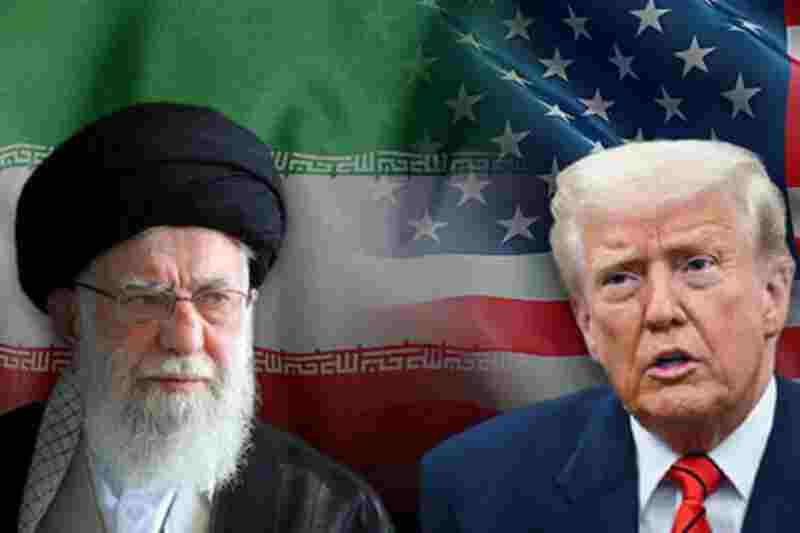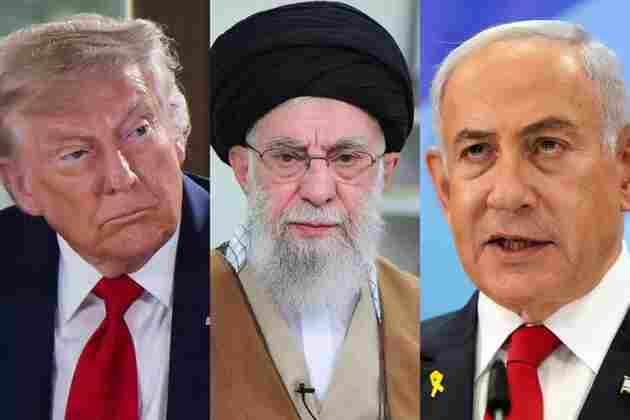Trump about USA–Iran Meeting: US Will Meet with Iran Next Week what coming next?
USA–Iran Meeting the next week? What’s coming?
In fact about the USA–Iran Meeting in a development that could reshape U.S. foreign policy and redefine the landscape of Middle East diplomacy, former President Donald Trump announced this week that the United States will engage in direct talks with Iran next week.
The about announcement comes at a time of heightened geopolitical volatility, ongoing nuclear tensions, and domestic debate over the future of U.S. leadership on the global stage, Trump Announces Upcoming US-Iran Meeting for Next Week, US-Iran meeting.
“We’ll be meeting with Iran next week—things are moving quickly. It’s going to be big,” Trump told supporters during a campaign-style rally in Phoenix, Arizona, on June 24, Trump says US will meet with Iran next week.
While the Biden administration has yet to confirm or deny involvement, the statement has sparked widespread speculation, media scrutiny, and international reactions.
It raises crucial questions about whether Trump is acting independently, if the U.S. government endorses the move, and what’s truly at stake for both countries in this unexpected turn of diplomacy.
Trump’s Return to the Global Stage: Political Power Play or Diplomatic Opportunity?
Since leaving office, Donald Trump has remained an omnipresent force in American politics. Now, as he leads the polls for the 2024 Republican nomination, his influence is stretching beyond domestic rhetoric into foreign policy realms, and he announces Upcoming US-Iran Meeting for Next Week
Trump’s announcement signals for U.S–Iran Meeting are dramatic re-entry into global diplomacy.
It’s unclear whether he is officially representing U.S. foreign policy or orchestrating the meeting through back-channel negotiations.
Either way, his statement has upended traditional diplomatic norms and left the Biden administration walking a diplomatic tightrope.
Some analysts suggest that Trump is attempting to project strength and international relevance ahead of the 2024 elections, while others argue this move may open long-stalled channels of communication.
⚠️ The Context about USA–Iran Meeting: Tensions Between the US and Iran in 2025
U.S.-Iran relations have been deteriorating for years, but the last six months have seen dramatic escalations. In May 2025.
American airstrikes reportedly targeted several Iranian nuclear research facilities in response to intelligence suggesting Tehran had surpassed uranium enrichment thresholds outlined in the now-defunct JCPOA (Joint Comprehensive Plan of Action).
USA–Iran Meeting what they will achieve? What do You Think?
These events revived fears of war in the Gulf, with both sides engaging in military posturing and cyber operations.
Iran has also resumed support for proxy groups in Iraq, Syria, Lebanon, and Yemen, further destabilizing the region. Meanwhile, the U.S. has bolstered its military presence in the Persian Gulf, raising the possibility of accidental clashes.
Trump’s announcement of a meeting next week has taken the world by surprise. The timing is critical. For both nations, diplomatic engagement could be a pressure-release valve—or a political trap.
📊 What Could Be on the Table During the USA–Iran Meeting Talks?
Though no official agenda has been confirmed, foreign policy experts believe that if the meeting occurs, the following issues will likely dominate the discussionafter Trump Announces Upcoming US-Iran Meeting for Next Week:
1. USA–Iran Meeting: Iran’s Nuclear Program
The most immediate concern is Iran’s expanding nuclear activity. The International Atomic Energy Agency (IAEA) reported in June that Iran had enriched uranium to near-weapons-grade levels. Iran claims its program is peaceful, but U.S. and Israeli officials have called this a direct threat.
2. USA–Iran Meeting: Sanctions Relief and Economic Leverage
Iran’s economy is in crisis. Severe U.S. sanctions have crippled its banking, oil, and industrial sectors. In return for nuclear concessions, Iran will likely seek:
- Unfreezing of billions in overseas assets
- Lifting of secondary sanctions on oil exports
- Access to the SWIFT international banking system
3. U.S–Iran Meeting Regional Conflicts and Proxy Militias
From Hezbollah in Lebanon to the Houthis in Yemen, Iran wields influence across multiple battlefronts. The U.S. may demand reduced support for armed groups that threaten American allies.
4. Maritime Security and the Strait of Hormuz after USA–Iran Meeting
Iran has harassed international shipping in the Strait of Hormuz. A new agreement may aim to de-escalate naval tensions and guarantee freedom of navigation.
5. USA–Iran Meeting: Hostage Diplomacy and Human Rights
Several American citizens remain detained in Iran on espionage charges. The U.S. could demand their release as a precondition or gesture of goodwill.
🌐 USA–Iran Meeting: International Response to the Trump-Iran Announcement
🇫🇷 France and the EU about the USA–Iran Meeting
The European Union welcomed the announcement with cautious optimism. French President Emmanuel Macron, who has often positioned himself as a mediator between Washington and Tehran, said:
“Any genuine diplomatic effort is a step toward peace, provided it includes accountability and transparency.”
🇮🇱 Israel about USA–Iran Meeting
Israel has reacted with alarm. Israeli intelligence officials have warned that Iran is “within weeks” of developing a nuclear warhead if left unchecked. Prime Minister Eli Cohen said:
“Any talks that legitimize Iran’s nuclear program without complete dismantlement are unacceptable to Israel.”
🇸🇦 Saudi Arabia
Saudi officials have not publicly commented but are likely monitoring developments closely. A thaw in U.S.-Iran tensions would significantly impact Riyadh’s regional calculations.
🤝 Could This USA–Iran Meeting Lead to a New Deal?
Many wonder if this meeting could pave the way for a new Iran nuclear agreement—sometimes dubbed “JCPOA 2.0”—but skepticism abounds. The original deal, signed in 2015 under President Obama and scrapped by Trump in 2018, took years of multilateral negotiation. Any new deal would face immense opposition from Republicans and possibly from Iran’s hardline parliament.
Trump, however, has hinted he wants a new deal branded in his name, one that he claims will be “tougher, better, and safer for the world.”
🇺🇸🤝🇮🇷 What Happens Next After the USA–Iran Meeting?
1. High-Stakes Location & Participants
- Expect the meeting to be indirect and mediated, possibly via Oman or Qatar, echoing past USA–Iran negotiations.
- U.S. representation likely includes Special Envoy Steve Witkoff or Director Michael Anton, while Iran may send figures like Foreign Minister Abbas Araghchi.
2. Core Agenda about USA–Iran Meeting: Nuclear Deal Renewals and Ceasefire Talks

- The U.S. aims to complete partial nuclear arrangements first launched in April and paused due to regional conflict.
- Key U.S. demands will revolve around:
- A complete halt to uranium enrichment
- Removal of Iran’s highly enriched uranium stockpile
- Limitations on missile program development
Meanwhile, Iran is expected to push back, reaffirming its sovereign right to enrichment and opposing ceasefire conditions that sacrifice autonomy.
3. USA–Iran Meeting: Red Lines & ‘Deal-or-Strike’ Leverage
- U.S. officials have stated that failure to reach agreement could trigger military options—specifically at nuclear sites like Fordow.
- Iran has retorted, signaling readiness to resume enrichment unilaterally and to bar IAEA inspectors unless the U.S. accepts their demands.
4. USA–Iran Meeting: Internal Ebb and Flow in Tehran
- Hardline and moderate factions in Iran are competing for influence, especially in light of Supreme Leader Khamenei’s relative isolation.
- Moderate voices seek diplomacy, while hardliners oppose U.S. overtures. This internal tug-of-war may impact whether Tehran opts into meaningful talks or shuts the door.
5. USA–Iran Meeting: Potential Confidence-Building Measures
If talks advance constructively, expect confidence-building steps such as:
- A gradual resumption of IAEA visits
- Partial release of frozen assets
- Discussions around civilian nuclear projects and economic revival tied to U.S. and EU cooperation
Keep an eye out for preliminary frameworks announced during or shortly after the meeting.
6. USA–Iran Meeting Staying Regional: Israel, Proxy Forces & Broader Peace
- Israel maintains close coordination with the U.S., ensuring any deal protects its strategic security.
- The U.S. also wants to contain potential spillover—such as continued attacks by Iran-backed groups (e.g., Houthis in Yemen, Hezbollah).
- U.N.-backed diplomatic efforts may propose humanitarian corridors, particularly for Gaza relief.
7. USA–Iran Meeting Economic & Energy Markets: Watching for Ripples
- Analysts see limited risk to oil prices at present.
- But a breakdown could disrupt shipping routes like the Strait of Hormuz—and cause turbulence in global energy markets if proxy warfare escalates.
8. USA–Iran Meeting: Next Steps for Diplomatic Engagement
Short term (days to weeks):
- Likely an announcement or joint statement signaling progress—or not.
- Iranian response will be carefully parsed: either acceptance, diplomatic pause, or defiant silence.
Medium term (weeks to months):
- If successful, expect:
- Follow-up technical and IAEA discussions
- Plots for incentives—such as phased sanctions relief, asset access, or civilian nuclear cooperation
If talks falter, military tension may heighten, and U.S.–Israeli strikes on Iran’s nuclear facilities could resume.
🔍 USA–Iran Meeting: Why This Matters
- Globally, a revived deal could calm Middle Eastern tensions and narrow the risk of broader regional wars.
- For markets and energy policy, it could stabilize oil exports and financial flows.
- For U.S. national strategy, it signals whether diplomacy or deterrence is the priority.
✅ USA–Iran Meeting Stay Tuned
- Watch statements coming from the U.S. and Iranian foreign ministries.
- Follow regional military actions—especially in places like Yemen, Gaza, and Iraq.
- Monitor IAEA engagement for signals of renewed transparency and nuclear safeguards.

